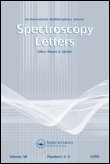
SPECTROSCOPY LETTERS
Scope & Guideline
Exploring the Depths of Spectroscopic Research
Introduction
Aims and Scopes
- Multidisciplinary Spectroscopic Applications:
The journal emphasizes the use of diverse spectroscopic techniques, including Raman, infrared, nuclear magnetic resonance, and X-ray fluorescence, to explore various scientific fields such as chemistry, biology, environmental science, and materials science. - Computational and Theoretical Studies:
There is a strong focus on integrating computational methods, such as molecular docking and quantum chemical calculations, alongside experimental spectroscopic techniques to provide deeper insights into molecular structures and interactions. - Analytical Method Development:
The journal frequently publishes papers that describe novel spectroscopic methods and their enhancements, including machine learning approaches and deep learning algorithms to improve analytical sensitivity and specificity. - Environmental and Health Applications:
Research often targets environmental monitoring and health-related applications, utilizing spectroscopy to analyze pollutants, assess food safety, and study biological samples for medical diagnostics. - Cultural Heritage and Archaeometry:
The journal includes studies that apply spectroscopic techniques to archaeology and art conservation, emphasizing the characterization of historical artifacts and materials.
Trending and Emerging
- Machine Learning and AI Integration:
There is a significant increase in studies employing machine learning and artificial intelligence to enhance spectroscopic data analysis, indicating a trend towards more sophisticated data interpretation and predictive modeling. - Multimodal Analytical Approaches:
Emerging themes involve the combination of various spectroscopic techniques with complementary methods, such as hyperspectral imaging and chemometrics, to improve the characterization and analysis of complex samples. - Biomedical Applications:
An increasing emphasis on biomedical applications of spectroscopy is evident, with many recent studies focusing on cancer diagnostics, drug interactions, and the analysis of biological samples for health monitoring. - Sustainable and Environmental Monitoring:
Research addressing environmental issues, including pollution detection and sustainable practices using spectroscopy, has gained traction, reflecting a growing concern for ecological health and safety. - Nanotechnology and Advanced Materials:
There is a notable rise in studies investigating nanomaterials and their applications in spectroscopy, particularly in enhancing sensitivity and specificity for various analyses.
Declining or Waning
- Traditional Spectroscopy Techniques:
There appears to be a waning focus on classic spectroscopic techniques in isolation, such as simple UV-Vis or basic FTIR analyses without advanced enhancements or integrations with computational methods. - Generalized Chemical Analysis:
Papers focusing solely on broad chemical analysis without specific applications or novel methodologies seem to be less prevalent, indicating a shift towards more specialized and application-driven research. - Basic Material Characterization:
Research that merely describes the physical properties of materials using traditional methods without integrating advanced computational or innovative analytical techniques is becoming less common.
Similar Journals
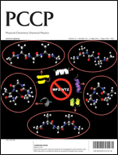
PHYSICAL CHEMISTRY CHEMICAL PHYSICS
Illuminating the Path to Breakthroughs in Chemical PhysicsPhysical Chemistry Chemical Physics is a premier interdisciplinary journal published by the Royal Society of Chemistry, dedicated to advancing the fields of physical chemistry and chemical physics. With an impressive impact factor and categorized in the Q2 quartiles for both Physical and Theoretical Chemistry and Physics and Astronomy, this journal serves as a vital platform for the dissemination of high-quality research findings from 1999 through 2024. Based in the United Kingdom, the journal is committed to providing open access to its articles, enhancing the visibility and accessibility of research to a global audience. Researchers, professionals, and students alike are encouraged to contribute to this esteemed journal, ensuring impactful discussions and significant advancements in the understanding of chemical and physical phenomena. With strong Scopus rankings underscoring its relevance, Physical Chemistry Chemical Physics stands out as an essential resource for specialists striving to innovate and excel within these dynamic fields.
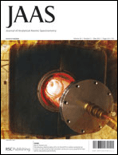
JOURNAL OF ANALYTICAL ATOMIC SPECTROMETRY
Empowering Researchers with Cutting-Edge Spectroscopic Techniques.JOURNAL OF ANALYTICAL ATOMIC SPECTROMETRY, published by the esteemed Royal Society of Chemistry, stands as a vital resource in the fields of Analytical Chemistry and Spectroscopy. Since its inception in 1971, this journal has been committed to disseminating cutting-edge research, offering an invaluable platform for the presentation of quantitative and qualitative analytical methods. With an impressive impact factor and a current classification in the Q2 category of both Analytical Chemistry and Spectroscopy, it significantly contributes to the advancement of knowledge in these disciplines. Researchers, professionals, and students looking to deepen their understanding of atomic spectrometry will find a wealth of innovative studies, reviews, and methodological papers that consistently push the boundaries of traditional and emerging analytical techniques. Although not an open-access journal, it provides accessible options that facilitate the engagement of a broad academic audience, ensuring that vital research is not confined solely to institutional repositories. The journal's exceptional standing, demonstrated by its strong Scopus rankings, further underscores its critical role in the scholarly communication landscape.
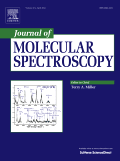
JOURNAL OF MOLECULAR SPECTROSCOPY
Advancing Knowledge Through Spectroscopic InnovationJOURNAL OF MOLECULAR SPECTROSCOPY, published by Academic Press Inc Elsevier Science, serves as a pivotal platform in the fields of Atomic and Molecular Physics, Physical and Theoretical Chemistry, and Spectroscopy. With its inaugural issue dating back to 1957, this journal has maintained a rich history of disseminating significant research findings, contributing to an understanding of molecular behavior and interactions through various spectroscopic techniques. Although currently positioned in the Q3 quartile across its respective categories as per 2023 rankings, the journal aims to enhance its stature further by promoting rigorous and impactful studies that push the boundaries of knowledge in spectroscopy. While access to this publication is not open, the rigorous peer-review process ensures that the articles published maintain high standards of scientific excellence, appealing to researchers, professionals, and students seeking comprehensive insights into molecular spectroscopy. The journal's ISSN is 0022-2852 and its E-ISSN is 1096-083X.

Annual Review of Physical Chemistry
Illuminating the Path of Innovation in ChemistryAnnual Review of Physical Chemistry, published by Annual Reviews, stands as a premier source of comprehensive review articles in the field of physical chemistry. With a prestigious impact factor and a strong reputation reflected in its Q1 rankings in both Physical and Theoretical Chemistry and Medicine (Miscellaneous), this journal is essential for researchers seeking to stay at the forefront of advancements in the discipline. Covering a wide array of topics, the Annual Review of Physical Chemistry synthesizes the latest findings, trends, and methodologies, providing a vital resource for professionals and students alike. Although it does not offer open access, its scholarly rigor and in-depth analyses ensure it occupies a critical space in academia. Its consistent publication since 1975 guarantees that it has historical significance and relevance, making it a cornerstone for those engaged in cutting-edge research within the realm of physical chemistry.
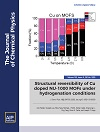
JOURNAL OF CHEMICAL PHYSICS
Exploring the Dynamics of Matter and EnergyJOURNAL OF CHEMICAL PHYSICS, published by AIP Publishing, stands as a premier scholarly source within the realms of physical and theoretical chemistry, as well as physics and astronomy. With an enduring history dating back to 1933 and converging until 2024, this journal has established itself as a cornerstone of the scientific community, evidenced by its prestigious Q1 categorization in multiple fields, including medicine and general physics. It is ranked 37th out of 243 in the general physics and astronomy category and holds a commendable 39th position in physical and theoretical chemistry according to Scopus rankings, highlighting its significant impact in these disciplines. Although not an open-access journal, it caters to a wide audience of researchers, professionals, and students seeking to deepen their understanding of the interactions and dynamics of chemical systems. With its expertly curated content, the JOURNAL OF CHEMICAL PHYSICS continues to play a vital role in advancing knowledge and fostering innovation across its core subjects.
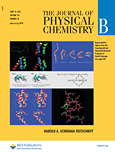
JOURNAL OF PHYSICAL CHEMISTRY B
Transforming Ideas into Breakthroughs in ChemistryJournal of Physical Chemistry B, published by the American Chemical Society, is a leading international platform dedicated to advancing our understanding of physical chemistry and its applications in various interdisciplinary fields. With an impressive 2023 Impact Factor, and categorized in Q1 for Physical and Theoretical Chemistry as well as Surfaces, Coatings and Films, this journal showcases cutting-edge research that contributes significantly to materials science, supporting the innovative development of new materials and technologies. The journal, established in 1997 and converging its years of publication to 2024, maintains rigorous peer-review standards and is accessible to a global audience, enabling the dissemination of pivotal research findings. Moreover, it is renowned for its comprehensive coverage in the realms of materials chemistry and miscellaneous medical applications, making it a vital resource for researchers, professionals, and students alike in their pursuit of excellence in scientific inquiry.

Physical Chemistry Research
Unveiling new methodologies in fluid flow and transfer processes.Physical Chemistry Research, published by the Iranian Chemical Society, is an esteemed academic journal dedicated to advancing knowledge within the fields of *Fluid Flow and Transfer Processes*, *Physical and Theoretical Chemistry*, and *Statistical and Nonlinear Physics*. Since its inception in 2013, the journal has established a crucial platform for researchers, professionals, and students to share innovative findings and methodologies, enhancing collaboration and knowledge dissemination in the physical chemistry community. With impactful contributions recognized in Quartile 3 and Quartile 4 classifications across various categories, the journal is positioned to cultivate emerging research trends as it continues to converge through 2024. Researchers can benefit from diverse perspectives on crucial phenomena in physical chemistry, as the journal is indexed in prominent databases, further increasing accessibility and visibility. The *open access* policy ensures that cutting-edge research remains available to a broad audience, promoting the growth of the discipline globally.
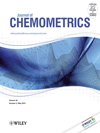
JOURNAL OF CHEMOMETRICS
Innovative Approaches to Chemical AnalysisJOURNAL OF CHEMOMETRICS is a prestigious journal published by Wiley that has been a cornerstone in the fields of analytical chemistry and applied mathematics since its inception in 1992. With an ISSN of 0886-9383 and an E-ISSN of 1099-128X, this journal occupies a notable position, reflected in its Scopus rankings where it holds the 90th rank in Applied Mathematics and the 56th rank in Analytical Chemistry. The journal, based in the United Kingdom, spans a converged publication timeline through 2024, meticulously exploring the interplay between chemical data analysis and mathematical methodologies. Though currently not open access, it offers essential insights through high-quality research articles that significantly contribute to advancing the understanding of chemometric techniques and their applications. With an impact factor demonstrating robust academic recognition, the JOURNAL OF CHEMOMETRICS serves as an invaluable resource for researchers, professionals, and students aiming to excel in the ever-evolving landscape of chemical data interpretation.
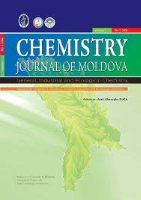
Chemistry Journal of Moldova
Fostering Knowledge: Open Access to Transformative Chemical ResearchChemistry Journal of Moldova is a pioneering open-access journal dedicated to fostering the dissemination of significant research in the diverse fields of chemistry, including Environmental Chemistry, Process Chemistry and Technology, and more. Published by the esteemed Academia Sciences Moldova, Institute of Chemistry, this journal has been at the forefront of scientific inquiry since its establishment in 2006. With an ISSN of 1857-1727 and a digital presence through its E-ISSN of 2345-1688, it provides an accessible platform for researchers, students, and professionals to share and engage with cutting-edge findings. Although currently ranked in the Q4 quartile in several chemistry categories, the journal is committed to improving its impact within the academic community and aims to highlight emerging trends and technologies in the chemistry domain. The journal's office is located at 3 Academiei Str, Chisinau MD-2028, Moldova. As it converges its publication years from 2016 to 2024, the Chemistry Journal of Moldova invites all contributors and readers to explore its rich repository of research that bridges innovative ideas to practical applications.
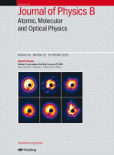
JOURNAL OF PHYSICS B-ATOMIC MOLECULAR AND OPTICAL PHYSICS
Illuminating Insights in Optical Physics ResearchJOURNAL OF PHYSICS B-ATOMIC MOLECULAR AND OPTICAL PHYSICS, published by IOP Publishing Ltd, stands as a key platform within the fields of atomic, molecular, and optical physics. With an impressive history spanning from 1988 to 2024, this journal is recognized for its high-quality research contributions, holding a Q2 ranking in both Atomic and Molecular Physics and Optics, and Condensed Matter Physics, as of 2023. While not an open-access journal, it continues to attract a broad readership and submissions due to its commitment to disseminating knowledge that is at the forefront of contemporary physics research. The journal's ISSN 0953-4075 and E-ISSN 1361-6455 signal its accessibility and relevance in academic discourse. As researchers, professionals, and students delve into the intricate phenomena of quantum mechanics and photonics, they will find pivotal studies and insights within these pages, reinforcing JOURNAL OF PHYSICS B's stature as an esteemed resource in the ever-evolving landscape of physics.